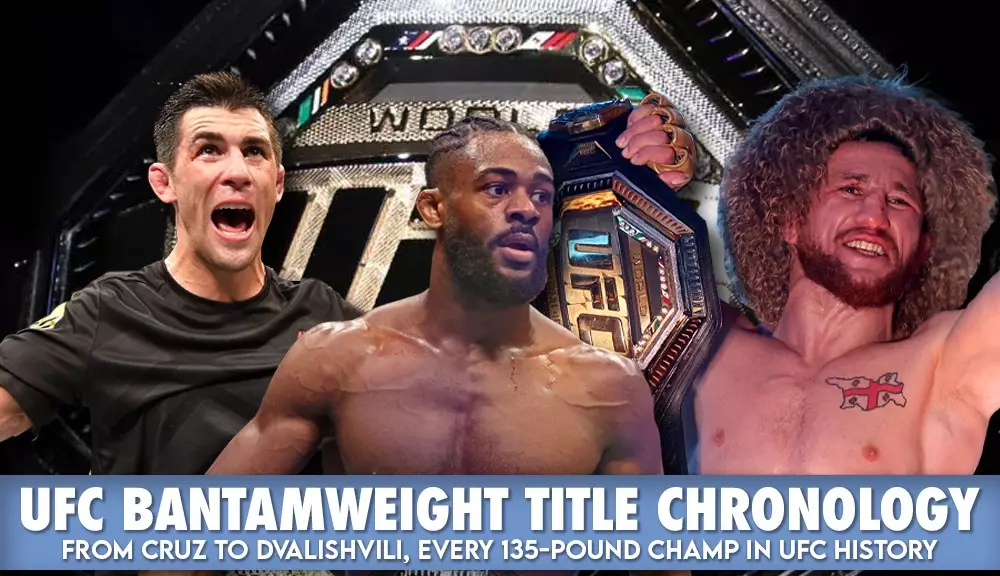The UFC bantamweight division has showcased a rich tapestry of fighters and champions since its inception, particularly following the merger with the World Extreme Cagefighting (WEC) in 2010. This article aims to dissect the title’s transformative journey, emphasizing significant reigns and the shifting landscape of the 135-pound class.
Dominick Cruz was the first person to claim the UFC bantamweight title after the WEC’s merger. Winning at WEC 53 against Scott Jorgensen on December 16, 2010, Cruz’s initial reign lasted an impressive 1,117 days, during which he successfully defended his title against formidable opponents like Urijah Faber and Demetrious Johnson. Cruz’s unique fighting style, characterized by unorthodox footwork and wrestling, helped him maintain dominance in the division, laying a robust foundation for the bantamweight category in the UFC.
Renan Barao and the Rise of the Brazilian Impact
Renan Barao emerged as a significant force in the bantamweight scene, capturing the title from Urijah Faber at UFC 149 on July 21, 2012. Barao’s reign was notable for its length and the resilience he demonstrated in defending against challengers like Michael McDonald and Eddie Wineland. His exceptional grappling and striking made him a difficult matchup for opponents, allowing him to reign as champion for a total of 534 days as interim champ before officially becoming the champion in 2014. His success highlighted the increasing internationalization of the sport and underscored the rise of Brazilian fighters in mixed martial arts.
Following Barao, T.J. Dillashaw took the championship mantle, dethroning Renan Barao at UFC 173 in 2014. Dillashaw’s reign was characterized by his relentless pace and striking accuracy, defending his title against tough opponents like Joe Soto and Barao again. His tenure showcased a more modernized approach to training and preparation, influencing how fighters approached the sport. Dillashaw’s era would later see him gain a reputation not only for his achievements inside the octagon but also for the controversies that shadowed his career.
New Faces and Emerging Stories
After Cruz, Garbrandt, and Dillashaw, the bantamweight division witnessed a surge of new talents. Aljamain Sterling and Petr Yan brought fresh dynamics to the ranks, with Sterling capturing the title against Yan at UFC 259 in 2021. His reign lasted nearly 900 days, marking a period of strategic fighting that emphasized grappling and endurance.
In the latest development, Sean O’Malley claimed the bantamweight championship but faced a stiff challenge from Merab Dvalishvili. Dvalishvili’s recent victory at UFC 306 demonstrates how quickly fortunes can shift in the octagon, reminding fans of the unpredictable nature of combat sports.
The history of the UFC bantamweight championship reflects the evolution of mixed martial arts itself. From the early days of Dominick Cruz’s reign to the current dynamic competitors like Merab Dvalishvili, the 135-pound class has consistently produced thrilling bouts and remarkable athletes. As fighters like O’Malley and Dvalishvili continue to shape the narrative of this weight division, the UFC bantamweight title will undoubtedly remain a focal point of excitement and competition in the coming years. The journey of these fighters not only defines their legacies but also enriches the tapestry of what it means to be a champion in the UFC.

